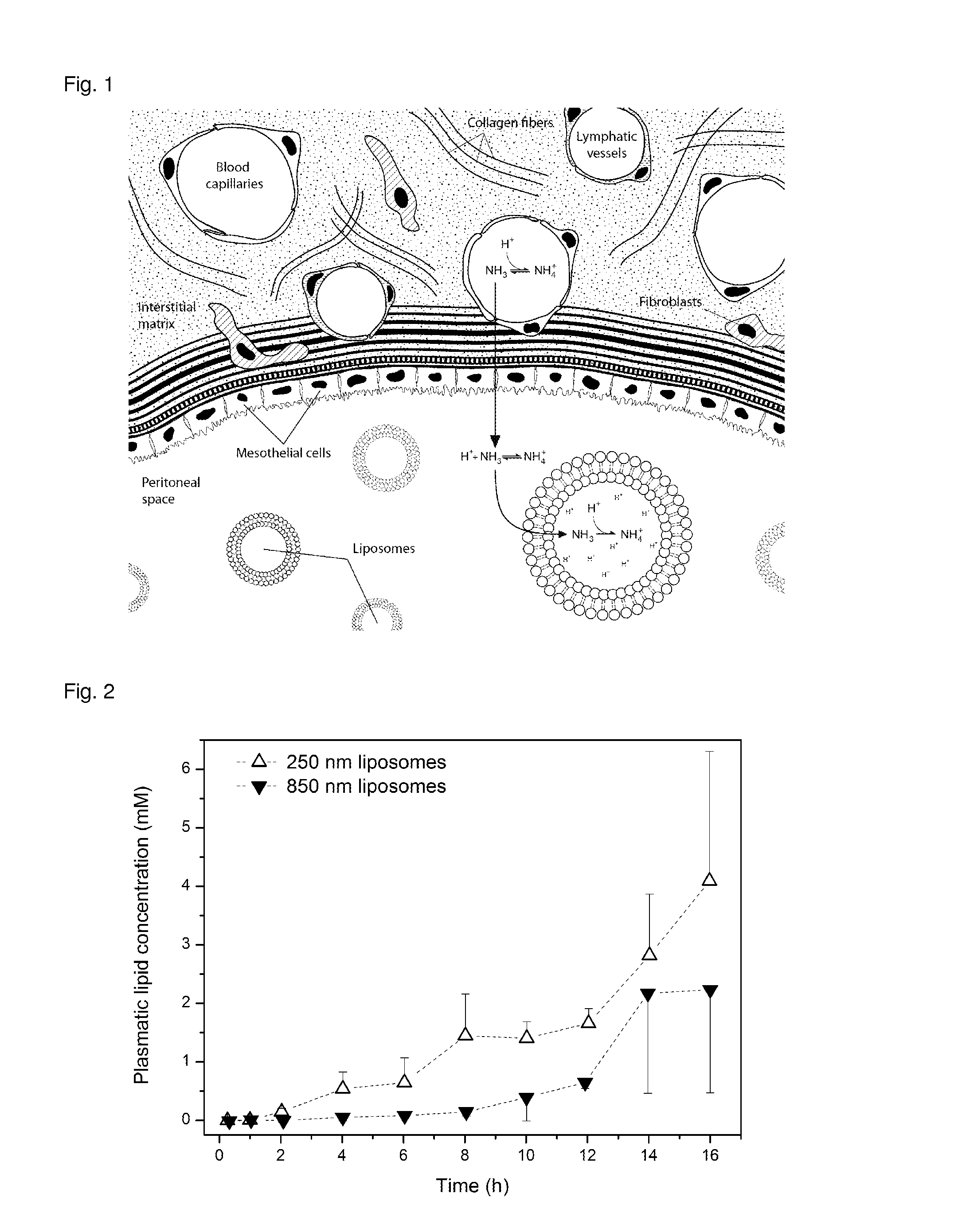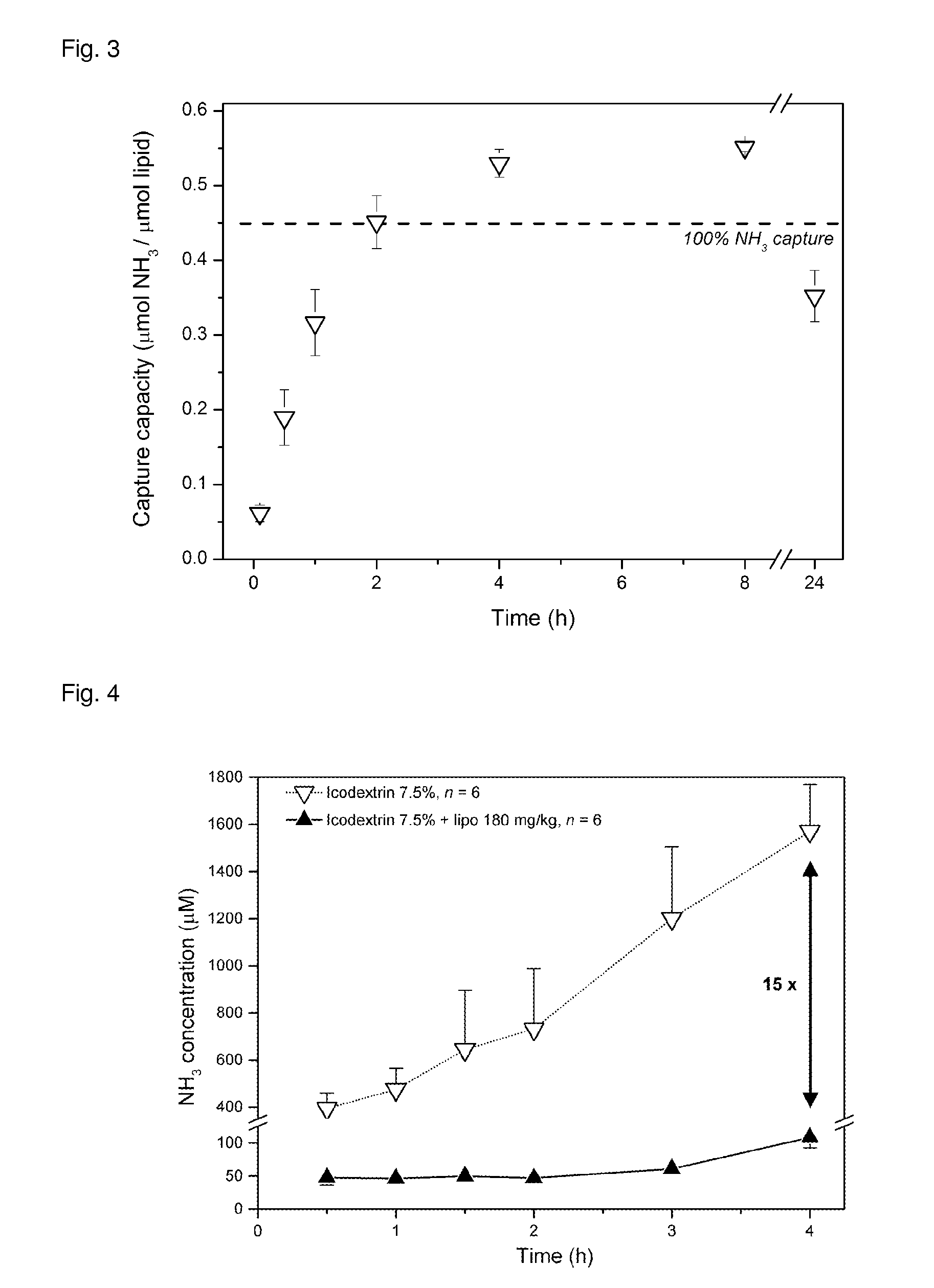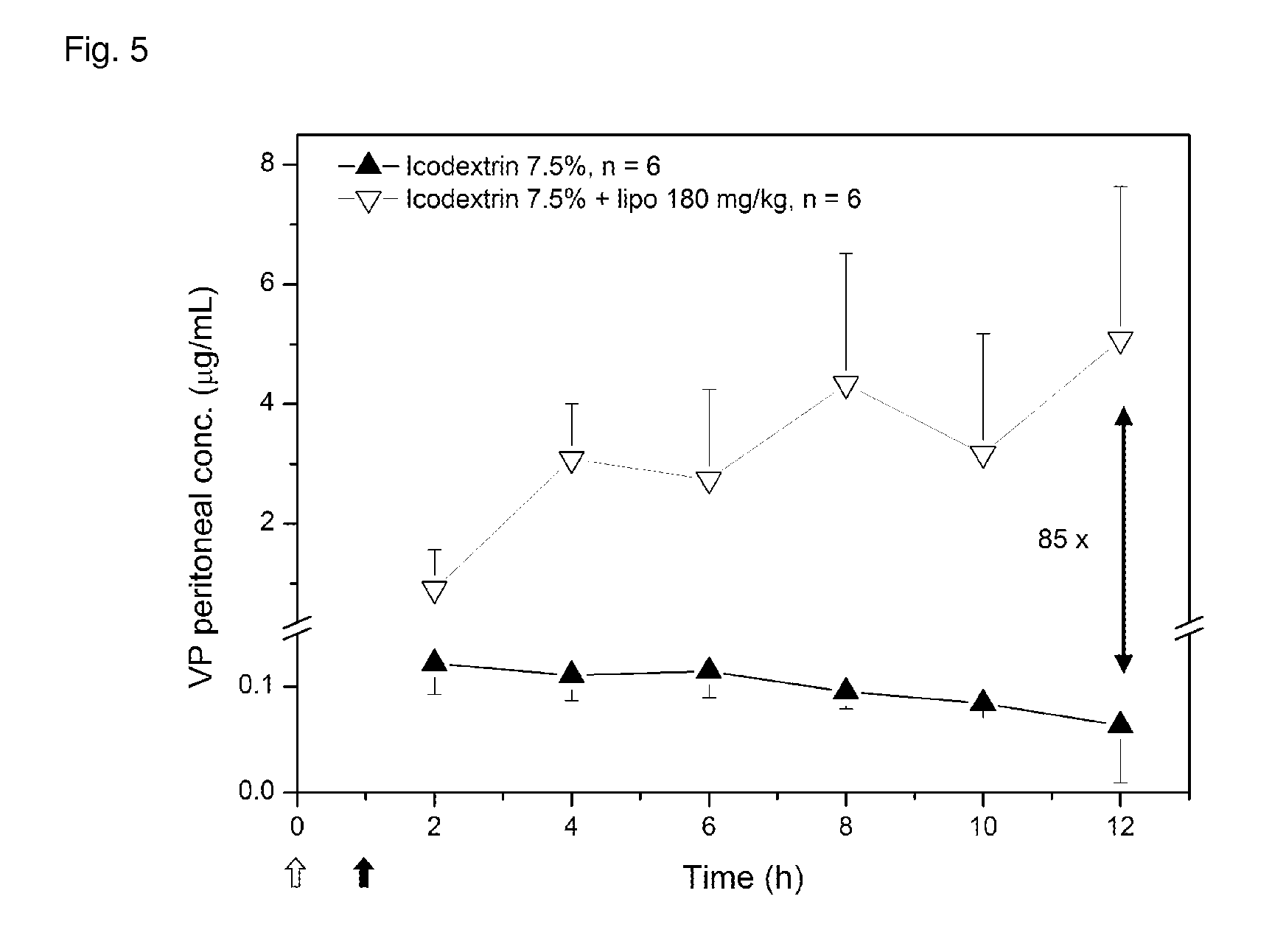Liposome composition for use in peritoneal dialysis
a technology of liposomes and compositions, applied in the field of liposome compositions for use in peritoneal dialysis, can solve the problems of ammonia toxicity, only available mechanisms, and ammonia toxicity
- Summary
- Abstract
- Description
- Claims
- Application Information
AI Technical Summary
Benefits of technology
Problems solved by technology
Method used
Image
Examples
example 1
Liposome Composition and Preparation
[0108]The formulation tested in the following experiments in vivo was composed of DPPC with 45 mol % of CHOL and 5 mol % of DSPE-PEG. The aqueous solution within the liposomes was a 250 mM sodium citrate solution buffered at pH 2. The formulations were prepared by the lipid film hydration / extrusion method (Hope M, Bally M, Webb G, Cullis PR. Production of large unilamellar vesicles by a rapid extrusion procedure. Characterization of size distribution, trapped volume and ability to maintain a membrane potential. Biochim Biophys Acta 1985, 55-65). Lipids, CHOL, and eventually the Cholesteryl BODIPY® FL-C12 dye, from Invitrogen (0.05 mol %) were dissolved in chloroform which was subsequently removed under continuous nitrogen flow and high vacuum for >12 h. The lipid film was hydrated with citrate buffer (250 mM, pH 2). The large vesicles were obtained by extrusion through 2 stacked membranes of 5 μm. The transmembrane pH-gradient was established by d...
example 2
Liposomes Drainage from the Peritoneal Space to the Blood after Intraperitoneal Administration
[0109]Sprague-dawley rats (male, 300 g) were lightly anesthetized by isofluran inhalation (2%) and 20 mL of a solution of icodextrin 7.5% containing liposomes (either 250 or 850 nm of diameter) bearing the non-exchangeable sterol dye (Cholesteryl BODIPY® FL-C12, Invitrogen, 0.05 mol %) in their membrane were slowly injected in the peritoneal space through sterile puncture. Then, blood aliquots of 250 uL were sampled through the tail veins at 15 min, 1, 2, 4, 6, 8, 10, 12, 14, 16 h after i.p. injection. Plasma was separated from the blood aliquots by centrifugation (6000 g for 10 min) and the dye fluorescence measured in plasma at λem=520 nm (λex=470 nm).
example 3
In Vitro Ammonia Uptake by pH-Gradient Liposomes in 50% Fetal Bovine Serum
[0110]Ammonia (NH3) uptake kinetics were monitored in 50% FBS in side-by-side diffusion cells (PermGear, Hellertown, Pa.) at 37° C. The liposomes used in this experiment had a diameter of 850 nm and contained 54 mol % DPPC, 45 mol % of cholesterol, and 1 mol % of DSPE-PEG, and an internal citrate solution (250 mM) buffered at pH 2. The donor compartment (liposome-free) was separated from the receiver compartment (containing liposomes) by a polycarbonate membrane with 100 nm pores. The NH3-to-lipid molar ratio was set to 0.45 with an initial NH3 concentration of 1.7 mM in both cells to achieve equilibrium. NH3 uptake by the vesicles in the receiver compartment was directly related to the reduction of toxin concentration in the donor cell. Aliquots of 100 μL were sampled from the donor compartment 3, 30 min, 1, 2, 4, 8, and 24 h after injection of pH-gradient liposomes in the receiver compartment. NH3 was then q...
PUM
 Login to View More
Login to View More Abstract
Description
Claims
Application Information
 Login to View More
Login to View More - R&D
- Intellectual Property
- Life Sciences
- Materials
- Tech Scout
- Unparalleled Data Quality
- Higher Quality Content
- 60% Fewer Hallucinations
Browse by: Latest US Patents, China's latest patents, Technical Efficacy Thesaurus, Application Domain, Technology Topic, Popular Technical Reports.
© 2025 PatSnap. All rights reserved.Legal|Privacy policy|Modern Slavery Act Transparency Statement|Sitemap|About US| Contact US: help@patsnap.com



